
New releases
A smarter, simpler Attentive
Explore new features →
Explore new features →

Whether you’re putting your first welcome journey together or planning out the season’s promotional period, you may be wondering: what is the difference between SMS and MMS, anyway? And should I be using one over the other?
Besides the basic definitions of each (which we’ll cover), here are a few things to know about each message format that can help you strengthen your overall text message marketing strategy.
Don't forget to check out our roundup of the 9 resources you'll want to bookmark as you start your SMS journey!
There are both big and small differences between SMS and MMS, so let’s cover the basics first:
SMS stands for short message service. This type of text message doesn’t feature images, videos, or GIFs, and is limited to 160 characters.
Note that when used in the context of SMS marketing, this term is often used interchangeably with text message marketing (meaning SMS marketing isn’t limited to SMS only).
MMS stands for multimedia messaging service. As the name implies, this type of text message contains a form of media, whether that’s a static image, a GIF, or a video in MP4 format.
Just like SMS, MMS has its own limitations. For example, we recommend that static images and GIFs be no larger than 200KB (since the file size can impact send speed), while MP4 videos are optimally sized at 200KB but can be as large as 600KB.
Just because an SMS is text-only doesn’t mean you’re limited to words. A well-placed emoji is always a great way to grab subscribers’ attention.
Any text message that’s longer than 160 characters will be split into two. In this case, the sender would be charged for each message sent, so be sure to double-check before you send.
Since an MMS contains media, these types of messages are more expensive to send. However, we generally see that MMS drives higher conversions and click-through rates for our customers than SMS—especially if the image or GIF includes complementary information, such as an image of the featured product.
That’s why most marketing strategies use a combination of SMS and MMS strategically to get the best ROI (more on that later).
After reading through the differences between SMS and MMS, you may be wondering if one text message format is “better” than the other. The short answer is no. Both are extremely effective when used in the right scenario, for the right audience, and at the right time. Here are some best practices and examples of when to use each.
There are a few scenarios in which we’d suggest opting for SMS over MMS. For example, use SMS when texting audiences outside of the US, as most international carriers don’t support MMS functionality. Beyond that, it comes down to strategy. Here’s what we recommend:
Reminding subscribers about a sale or offer
If you’re launching a multi-day sale, chances are you’ll be sending more than one text message promoting it to subscribers.
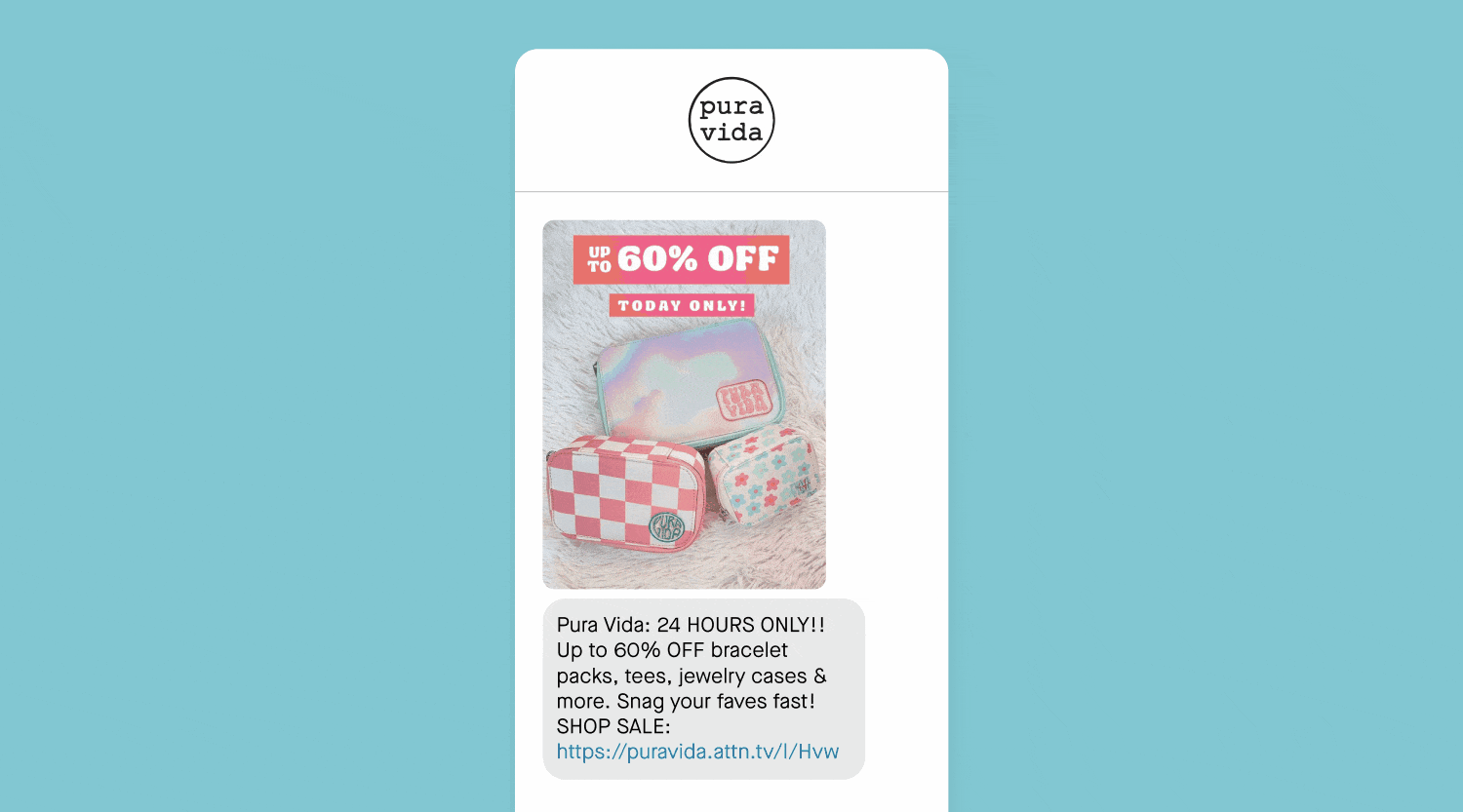
While your initial launch text message should include an image or GIF to catch their attention, we recommend sending an SMS as your next message. You should also consider using segmentation to only follow up with subscribers who haven’t converted yet.
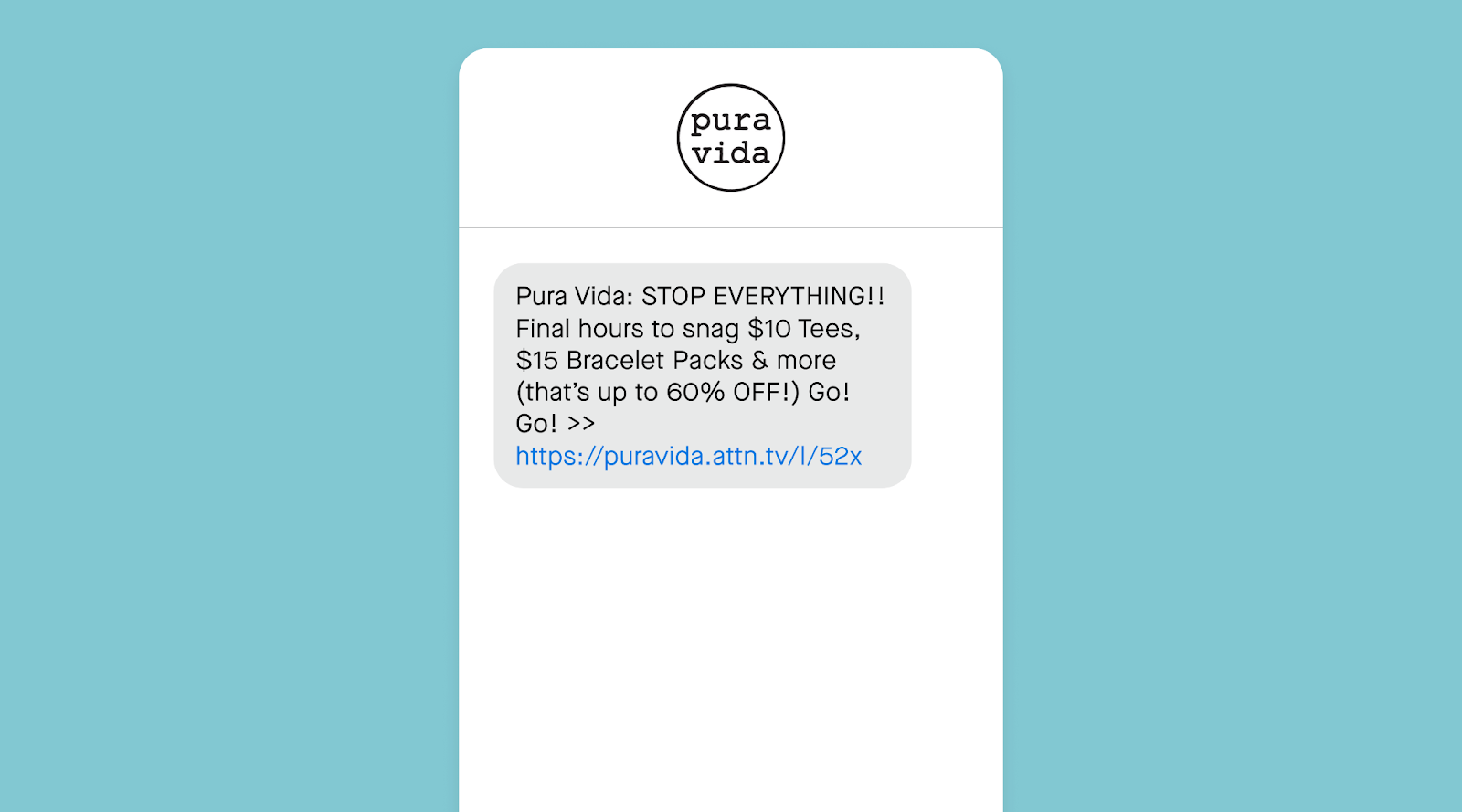
For example, Pura Vida sent an MMS with a GIF to first announce their 24-hour sale. Then, later that day, they followed up with an SMS to non-purchasers, letting them know there were just a few hours left to shop the sale.
Sharing transactional updates and post-purchase messages
If you’re sending informational updates, like a shipping notification, a delivery update, or a request to leave a review, SMS is usually the way to go.
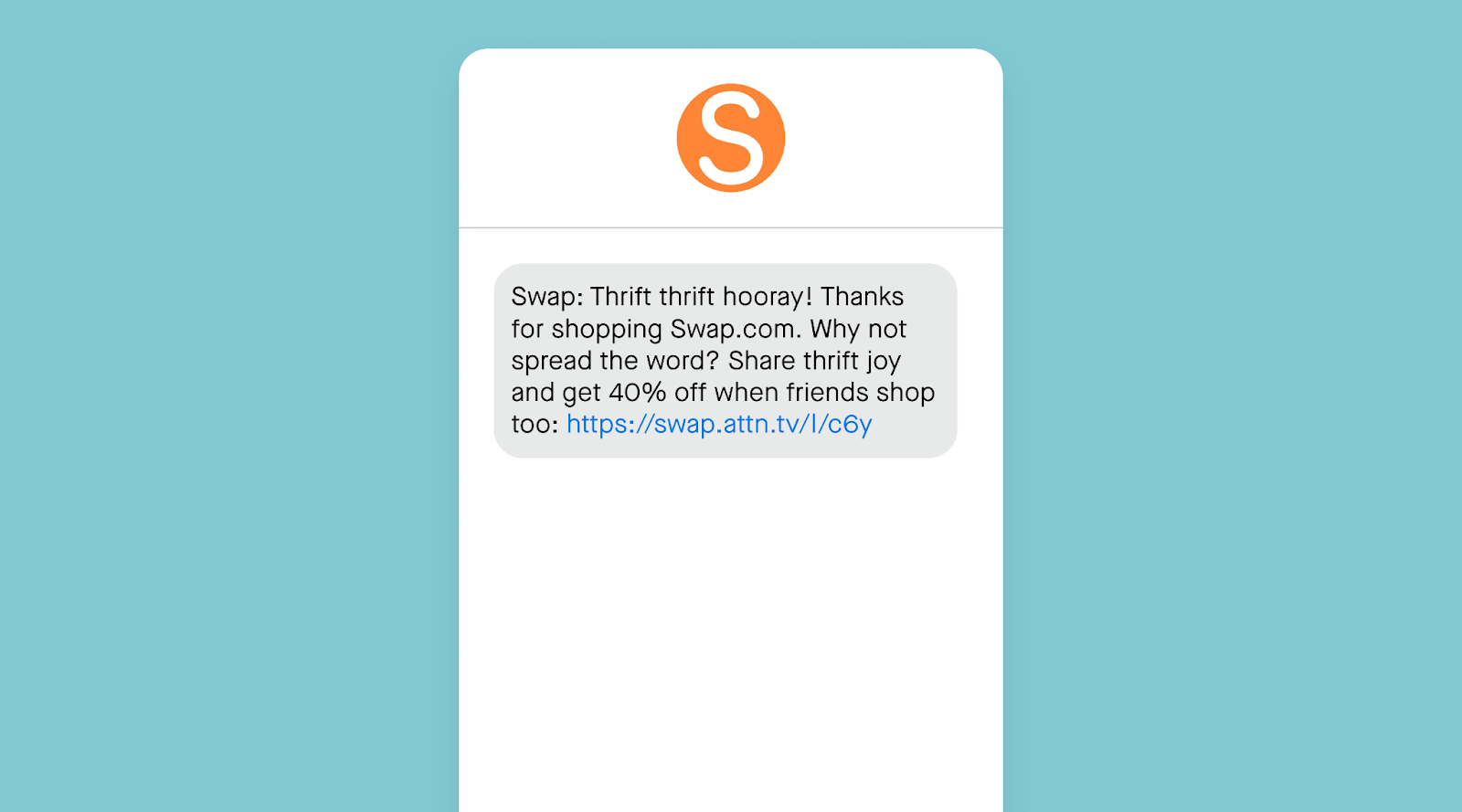
Of course, that doesn’t mean you can’t be creative. For example, Swap.com infuses their post-purchase message with their brand voice and offers 40% off when referring friends to shop. Meanwhile, Paravel texts customers their tracking info and reminds them that their shipment is carbon-neutral.

Engaging in conversational/two-way messaging
One marketing strategy that is especially impactful, whether it’s an SMS or MMS, is conversational, or two-way messaging. These types of messages can be powered by responses from real people (such as Attentive Concierge™) or by keywords that subscribers engage with and receive a triggered response based on their answer (such as Two-Way Journeys™).
For example, a makeup brand could send an SMS asking subscribers which kind of makeup products they’re interested in purchasing, and provide numbered options that subscribers can enter as a reply.
With this kind of messaging, the conversational nature of the back-and-forth can be very engaging and help you better understand and connect with subscribers.

Take this example from Litter-Robot, who built a back-and-forth triggered messaging flow asking subscribers about their biggest litter frustrations. Based on the subscribers’ answers, Litter-Robot provided a link to a relevant blog post or product page to help them learn how the brand and their products meet the subscriber’s specific needs.
Consider sending MMS when you want to make a big impression—think new product launches, announcing a major sale, or important seasonal moments.
Announcing a new product or feature
Visuals can go a long way in making an announcement, whether you want to showcase images of a new product or collection, or emphasize details (e.g., date/time of launch, info about the product, etc).
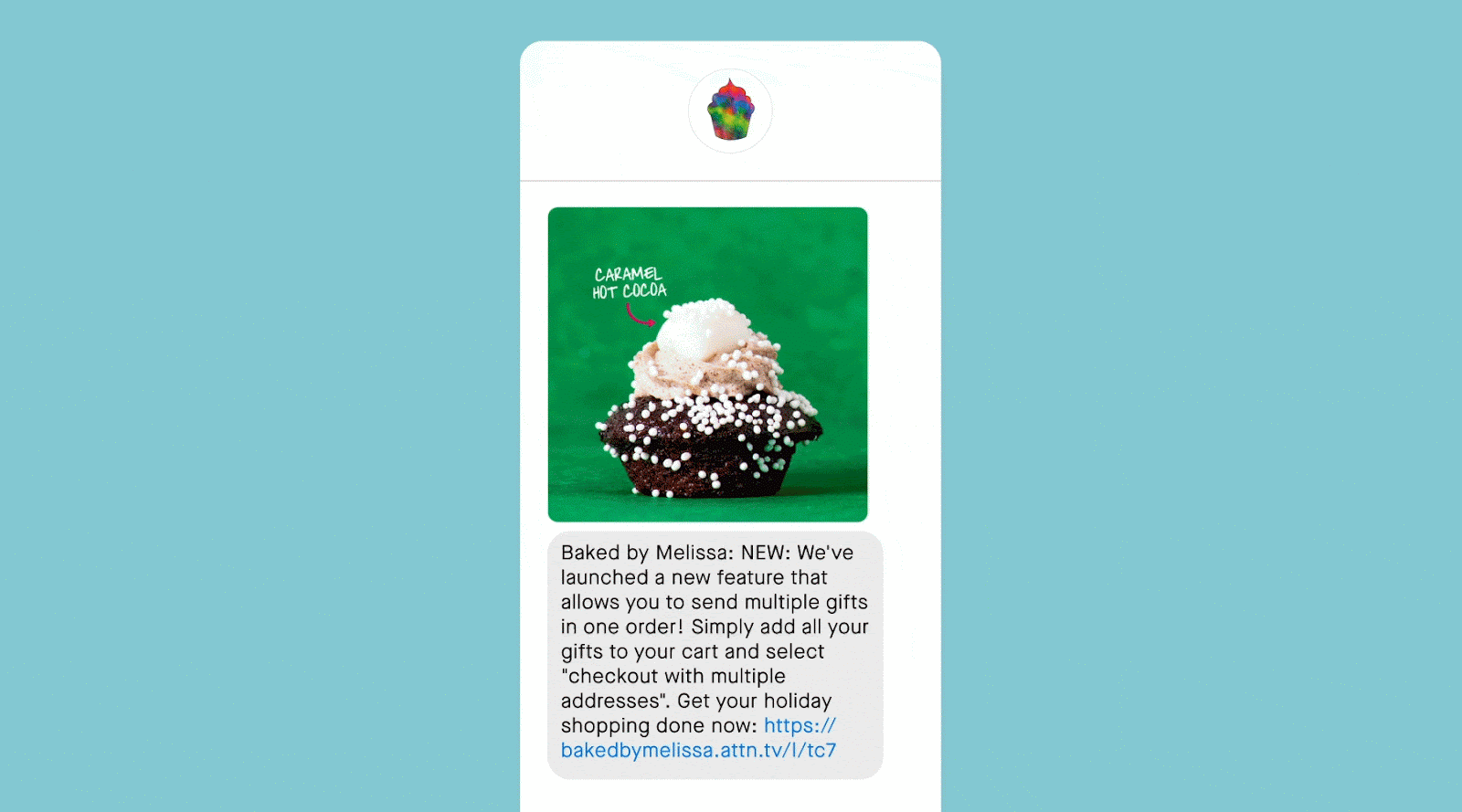
This MMS from Baked by Melissa is a great example: the brand announced the ability to send multiple gifts in one order and included a GIF showcasing some of the different treats they could order.
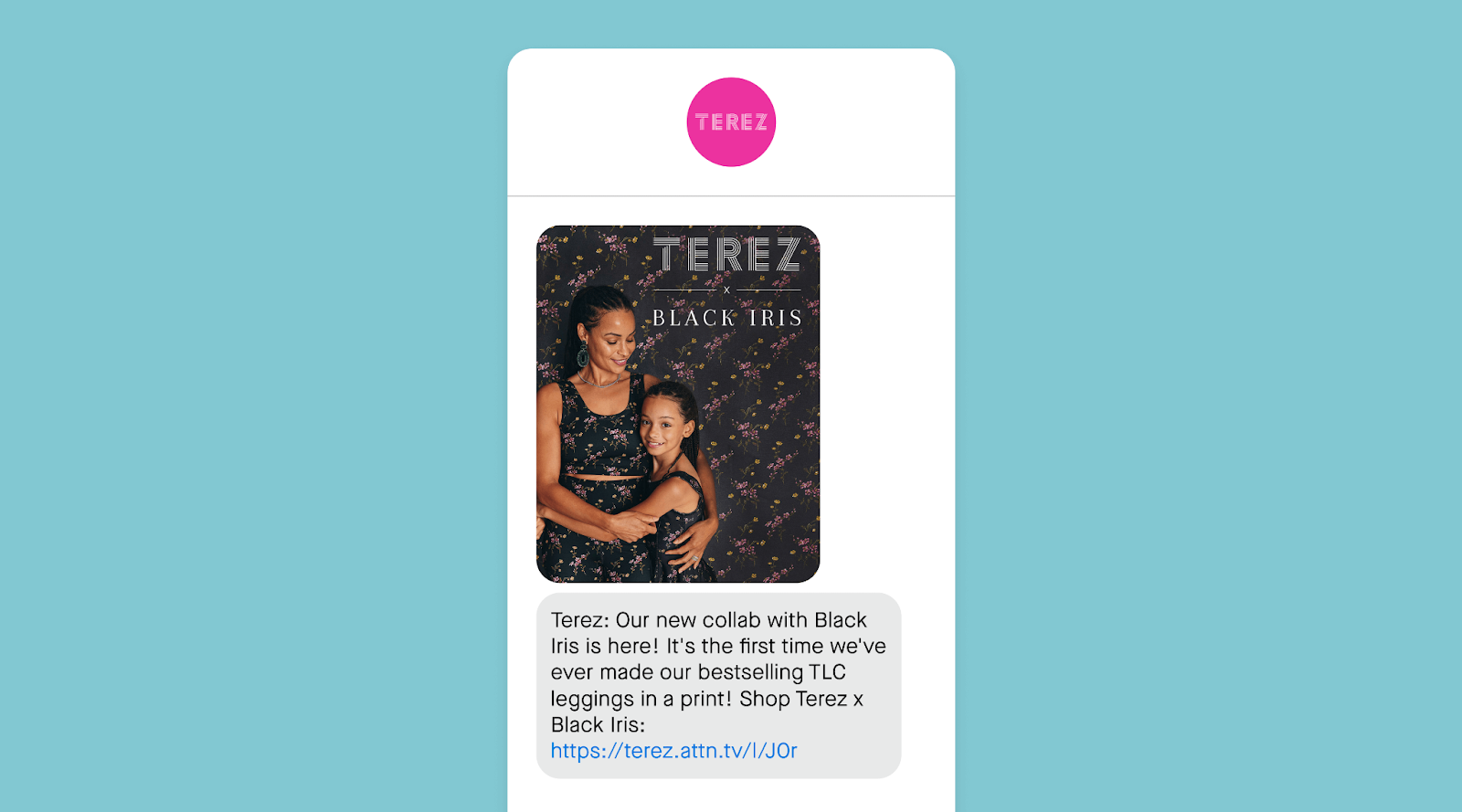
Another great example is Terez’s MMS announcing their new collaboration with womenswear brand Black Iris, which helped it sell out in just 48 hours.
Announcing (or closing out) a sale
Kicking off and ending sales with an MMS can be super effective, both in garnering interest and providing a final hit of excitement to subscribers.
Sending an abandoned cart message
If you want to remind your subscribers about the product they left behind, sending an MMS about their abandoned cart can be really effective. It feels more personalized than an SMS because it shows the subscriber exactly what they were just shopping for, and can help your message stand out in their text message inbox.

For example, nutpods features fun imagery in their abandoned cart message that lightheartedly reminds subscribers to complete their orders.
These are just a few of our best practices and examples, but when to send an SMS vs. MMS ultimately comes down to your content and engagement goals.
If you’re unsure about which will resonate the most with your audience, try A/B testing your messages—both campaign and triggered, and across promotions (e.g. product launches, sales, etc)—to see whether SMS or MMS drives more engagement.
And if you’re looking for inspiration, Texts We Love is a great place to find it.